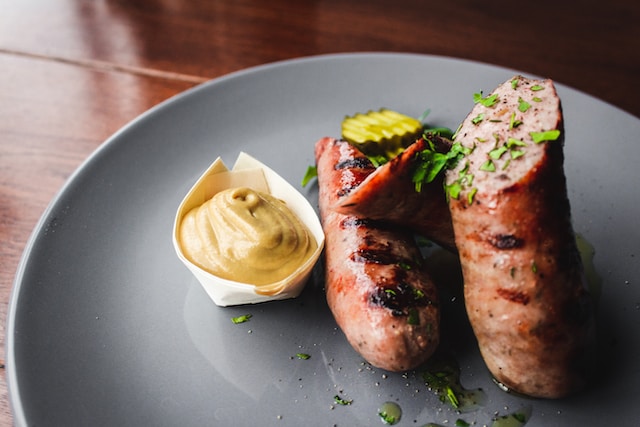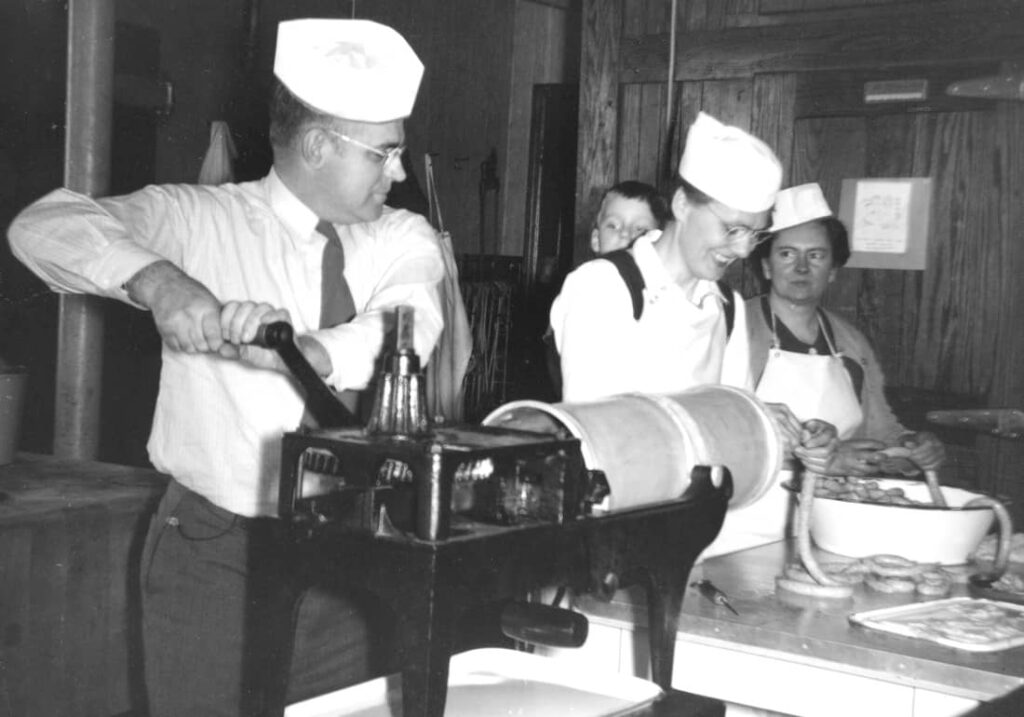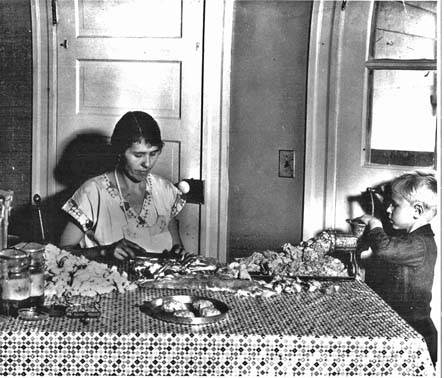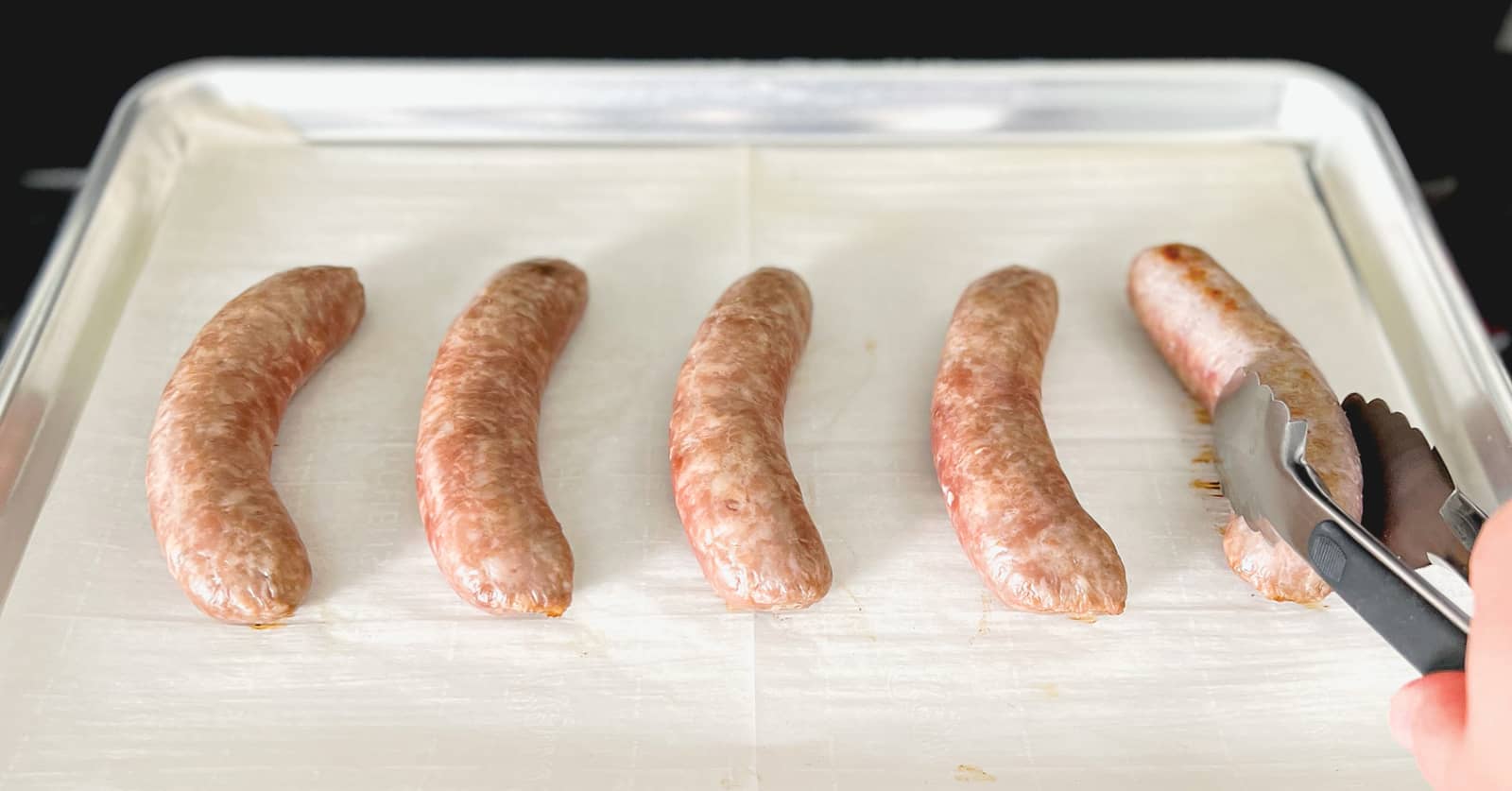Physical Address
304 North Cardinal St.
Dorchester Center, MA 02124
Physical Address
304 North Cardinal St.
Dorchester Center, MA 02124


Ever wondered, “What is bratwurst?” You’re in for a treat! This savory German sausage has a rich history and countless variations. We’ll guide you through its origins, ingredients, preparation methods, and more. By the end of this culinary journey, you’ll know how to cook it perfectly and serve it traditionally or with an innovative twist. So put on your apron — it’s time to discover the delectable world of bratwurst!


Bratwurst’s history has its roots in Germany, where it’s been a popular dish for centuries. It’s believed that bratwurst was first made by Germanic tribes, who would grind pork, beef or veal to create these savory sausages. The term ‘bratwurst’ itself likely comes from the Old High German words ‘brät-‘ meaning finely chopped meat and ‘-wurst’, which means sausage.
As you delve deeper into its origin, you’ll discover that bratwurst isn’t just a food item—it holds symbolic significance as well. Bratwurst symbolism is ingrained in many aspects of German culture. For instance, during certain festivals and public holidays like Oktoberfest, bratwurst stands as an emblem of communal harmony and celebration.
Over time, regional variations of the humble bratwurst have emerged across Germany. Each region uses distinct spices and cooking techniques that reflect local tastes and traditions—some smoke the sausages while others prefer them boiled or grilled. In fact, some areas even host their own Bratwurst festivals to showcase these variations!
Thuringia is particularly famous for such events with its Thuringian Rostbratwurst Festival—an annual event dedicated entirely to celebrating this regional delicacy. Local butchers compete for the title of best Thuringian sausage maker while visitors indulge in all things brat-related: tasting sessions, cooking demonstrations, even a grand parade featuring oversized inflatable sausages!
So there you have it—a brief exploration into the rich history of bratwursts! From their ancient origins to their contemporary cultural significance at festivals around Germany; from being simple sustenance to an enduring symbol of community spirit—there’s more to this delectable sausage than meets the eye (or palate!).
You’ll find that this traditional German sausage is typically made from pork, beef, or veal, and its preparation involves a mix of spices like nutmeg, coriander, or caraway. Bratwurst seasonings are often varied based on regional preferences and traditions which adds a unique twist to each version of this savory dish.
Bratwurst preparation isn’t just about seasoning though. The meat used is finely ground before it’s mixed with the spices. Then it’s stuffed into natural casings – usually hog or sheep intestines – giving them their renowned snap when bitten into. After stuffing comes the critical step: grilling or frying these sausages until they reach a mouth-watering golden brown coloration.
Regional variations don’t stop at flavors; size matters too! Nuremberg bratwursts are small and thin while Coburg ones are substantially larger. These differences stem from historical factors such as local livestock availability and butchering practices.
The beauty of Bratwurst lies in its versatility; whether you prefer them smoky from the grill or pan-fried till crisp, topped with mustard on a roll or served beside creamy potato salad. Its rich history coupled with regional intricacies make this humble sausage an interesting study in culinary heritage.
Now let’s dive into the various types of this iconic German sausage, each with its unique flavor profile and preparation method.
First up is the Nürnberger Rostbratwurst. Originating from the city of Nuremberg, these small, thin sausages are traditionally grilled over a beechwood fire and served six at a time on a plate or in a bun with mustard. Their distinct marjoram spice gives them an unforgettable savory tang.
Next, there’s Thüringer Rostbratwurst, which hails from Thuringia. This robust sausage is typically longer and thicker than other varieties, packed with pork, beef or sometimes veal. It’s seasoned significantly with garlic and caraway seeds for a bold taste that stands out in bratwurst festivals across Germany.
Moving on to Fränkische Bratwurst from Franconia region. These hefty sausages usually contain only pork and are flavored subtly with nutmeg, lemon zest, marjoram, and white pepper – an intricate balance that makes it uniquely flavorful.
While these traditional types dominate German cuisine, we mustn’t overlook contemporary adaptations like vegetarian alternatives to bratwursts. They boast similar seasonings but use plant-based proteins instead of meat – perfect for those who prefer their meals without animal products but still crave the authentic German experience.
Remember: each type of bratwurst has its own optimal way of serving – maybe alongside sauerkraut or potato salad; perhaps nestled into a crispy roll smeared with sharp mustard; even paired elegantly with local beer varieties at Oktoberfest celebrations.
So next time you’re savoring your bratwurst – be it at home or amidst bustling Bratwurst festivals – take note of these nuances as they may drastically alter your culinary journey through Deutschland’s diverse sausage landscape!

Ready to take the plunge and cook your own German sausage at home? Bratwurst, a culinary symbol of Germany, can be prepared in several ways. We’ll explore traditional Bratwurst grilling techniques as well as vegan alternatives.
It’s crucial to maintain the meat at a cold temperature while preparing bratwursts. The fat involved in the grinding and coating procedures should stay in a frozen state. If the meat isn’t kept cold, the fat may start to burn during cooking, leading to a reduction in both the flavor and moisture content of the bratwursts.
The first step is brining your bratwurst. This involves boiling in a pot with water or beer and onions for about 20 minutes. Don’t skip this crucial process – it pre-cooks the sausages before grilling, allowing them to retain juiciness while ensuring they don’t burst open under high heat.
Bratwurst can be grilled or fried like any other sausage. However, it’s a common practice to parboil it until it’s partially cooked before grilling. This technique can also be applied before sautéing. Parboiling ensures the bratwurst is thoroughly cooked on the inside while achieving a desirable browning on the outside.
Pair your perfectly grilled bratwurst with tangy sauerkraut, spicy mustard or horseradish for an authentic experience. Whether cooking meat-based or vegan varieties, remember that quality ingredients are key to a tasty outcome.
While cooking your own brats might seem intimidating at first glance, armed with these techniques it becomes quite manageable even for novice chefs. So go ahead: gather your ingredients, fire up that grill and let’s get sizzling! The reward is an irresistibly juicy sausage bursting with traditional German flavours right off the grill – one bite will tell you it’s worth every moment spent preparing it.
Once you’ve mastered the art of cooking these German sausages, it’s time to explore traditional ways to serve them. You’ll discover that bratwursts offer a myriad of serving size variations, each with its own charm and culinary appeal.
In Germany, bratwursts are traditionally served in a bun similar to an American hot dog but with regional differences. For instance, in Franconia, they like their bratwurst smaller and served three at a time in a bread roll named ‘Drei im Weggla’. The Thuringian Rostbratwurst is longer and thinner, enjoyed singly in crusty rolls.
Let’s not forget about garnishing; your Bratwurst garnishing tips can range from the simple to the extravagant. A common way is with mustard – either sweet or spicy – as this condiment perfectly complements the savory flavor of brats. Sauerkraut is another staple accompaniment; its sour tang counterbalances the rich fattiness of the sausage nicely.
Yet there are many other ways to enjoy your brats if you’re feeling adventurous. Some people love adding grilled onions for sweetness or pickles for acidity. Others prefer shredded horseradish for an unexpected kick or even curry ketchup for an exotic twist on this classic German dish.
Remember that authenticity doesn’t always mean sticking strictly to tradition: feel free to play around with different toppings and create your own unique version of this beloved German specialty! Just make sure you respect the sausage itself by cooking it properly first – then let your imagination run wild when it comes to serving up your masterpiece!
You’ve nailed the cooking and serving methods, so let’s delve into choosing the perfect drink to pair with your German sausage. It’s no surprise that beer is often considered the best accompaniment for bratwurst, given Germany’s legendary beer culture. This pairing is a tradition handed down through centuries and it’s all about complementing the rich flavors of the sausage.
When considering your beer selection, opt for a lager or an ale. These types of beers have strong enough flavors to hold their own against the savory meatiness of bratwurst without overwhelming it. If you’re going for a lager, consider a Märzen style – traditionally brewed in March and served in autumn, its malty sweetness perfectly balances out the saltiness of bratwurst. For an ale, consider a Hefeweizen or Dunkelweizen; both wheat beers possess fruity notes that provide an excellent contrast to the hearty taste of bratwurst.
However, if you’re not much of a beer drinker, fret not! There are wonderful cocktail combinations that can also enhance your culinary experience with bratwursts. A classic Bloody Mary can handle robust flavors while providing some acidity to cut through fat and spices beautifully. Alternatively, try sipping on a Whiskey Sour; its citrus notes will add brightness to each bite and harmonize well with any tangy mustard on your plate.
Choosing the right beverage involves understanding what will accentuate rather than overpower your meal’s tastes. Whether you fancy traditional brews or innovative cocktails – there’s always something that’ll make your feast even more enjoyable as long as you remember these tips when making your choice next time around.
Now let’s talk about some popular dishes that feature this iconic German sausage. Bratwurst has a versatile flavor profile, making it an excellent ingredient in many traditional and innovative recipes.
During Sausage festivals in Germany like Oktoberfest or Wurstmarkt (literally “sausage market”), you’ll find these dishes being celebrated alongside others like ‘Würstchen im Schlafrock’ (sausages in a dressing gown) – where the sausage is encased in puff pastry before baking.
The beauty of cooking with bratwurst lies in its adaptability to different culinary techniques—grilling, stewing, frying—and its ability to pair well with diverse ingredients from tangy pickles to sweet caramelized onions or spicy curry sauce. So next time you find yourself craving something savory and satisfyingly meaty – consider trying one these popular bratwurst dishes!
Believe it or not, this iconic German sausage has found its way into global culinary scenes, adding a unique twist to many international dishes. Thanks in part to bratwurst exportation trends, you’ll find the flavors of this savory sausage spicing up meals from Asia to America.
In Japan, for instance, they’ve taken the traditional bratwurst and incorporated it into okonomiyaki—a type of savory pancake filled with a variety of ingredients. The meaty flavor of the bratwurst complements the sweet and tangy profile of okonomiyaki sauce beautifully. Meanwhile in Australia, they have their own take on the German hot dog known as ‘the Aussie snag’. Here, bratwurst is often served in a slice of white bread with fried onions and your choice of sauce.
Moving over to North America, cultural adaptations of bratwurst are plentiful. In Wisconsin—the U.S state known for its deep-rooted German heritage—brats are simmered in beer before hitting the grill for that extra kick. On game days, you’re likely to see them paired with classic American sides like coleslaw and potato salad.
Across the Atlantic in England, Bratwurst has been welcomed with open arms into British pub fare. It’s common to find Bratwurst served alongside hearty helpings of mashed potatoes and gravy—a satisfying fusion that marries well-loved elements from both cuisines.
Indeed, no matter where you go around the globe these days there seems to be an intriguing version of this German delicacy waiting for discovery – each one showcasing how versatile and adaptable our beloved Bratwurst truly is!
While it’s loved for its savory flavor, let’s also shed some light on the nutritional profile of this popular German sausage. A typical bratwurst comprises a mix of pork, beef, or veal and is seasoned with various spices like nutmeg and caraway. It provides ample protein, but how does it stack up in terms of other nutrients?
The average serving size of bratwurst is about 85 grams (roughly the size of a standard hot dog). This portion will provide you around 250-300 calories depending largely on the meat blend and preparation method used. It’s important to note that these figures can vary widely based on factors such as added ingredients and cooking techniques.
In terms of macronutrients, most bratwursts contain approximately 20-25 grams of protein per serving. They’re also high in fat – about 20-30 grams per serving – with a significant proportion being saturated fat. The sodium content tends to be quite high as well due to added salt during processing.
Now if you’re contemplating Calorie Control while enjoying your favorite sausage, remember that pairing your bratwurst with healthier sides such as sauerkraut or mustard rather than calorie-dense options like buns and cheese can help balance your meal.
As far as Bratwurst Allergies are concerned, they are relatively rare but can occur due to certain additives or specific types of meat used in the sausage making process. Always check ingredient lists if you have known food allergies or sensitivities.
So while they aren’t exactly health food, when eaten in moderation and coupled with balanced accompaniments, brats can certainly find their place within a varied diet without wreaking havoc on your nutrition goals.
If you’re on the hunt for quality sausages, knowing where to buy and how to choose them is key. Bratwurst are a culinary delight that can be found in various locations worldwide, from local supermarkets and specialty food stores to online retailers.
When shopping for bratwurst, take note of the packaging. Bratwurst packaging should clearly state the ingredients used and provide information about the production method. Look for products that include high-quality pork, veal or beef with no fillers or additives. The best bratwurst are typically made using traditional German methods, so seek out those that mention this on their packaging.
Regional varieties also play a significant role when choosing bratwurst. Each region in Germany has its own unique style of making these sausages, resulting in varying flavors and textures. For instance, Nuremberg’s petite-sized bratwursts pack a punch with marjoram while Thuringian-style ones are known for their strong garlic flavour coupled with caraway seeds and coriander.
Another important aspect to consider when buying your brats is freshness. If possible, opt for fresh over frozen as they tend to retain more flavor and have better texture.
But remember – even the most exquisite sausage won’t shine if it’s not cooked properly! Whether grilling or pan-frying your selected brats ensure you handle them gently; too much agitation can break their delicate casings which hold all those delightful juices inside.
Choosing quality bratwurst requires careful consideration but armed with this knowledge you’ll be able to navigate through your options like a pro! Happy feasting!